 I climbed into the steel reinforced bunkers overlooking the Normandy landing beaches on Pointe du Hoc eighty years after the Rangers overtook the strategic German lookout 90 feet above the English Channel. I pictured a 19-year-old American boy jumping out of a PT boat into icy waters, with nothing more than a gauze bandage for comfort on a stormy dawn illuminated by gunfire.
I climbed into the steel reinforced bunkers overlooking the Normandy landing beaches on Pointe du Hoc eighty years after the Rangers overtook the strategic German lookout 90 feet above the English Channel. I pictured a 19-year-old American boy jumping out of a PT boat into icy waters, with nothing more than a gauze bandage for comfort on a stormy dawn illuminated by gunfire.
I imagined him staggering across the dunes, dodging bullets and booby traps, clawing at the red cliffs, crawling through the hedge rows, groping for life in a foreign land, shooting at the shadows that could be his own comrades. He was an American soldier killing boys/men, who would have been his friends in another time and generation.

Here rests in honor glory a comrade in arms known but to God
I am of another time and generation — an American with a French-Normand spouse and German friends. Though I’ve been to Normandy hundreds of times, I visited the Normandy American Cemetery (outside St. Laurent) just once.
Only when standing on the hallowed grounds, where Americans lay under a blanket of emerald earth, marked by 9,386 white crosses, could I truly understand the enormity of their great and tragic endeavor on June 6, 1944.
On a rainy day, Normandy’s landscape offers a bleak reminder of her sad past, but on sunny ones the murky coastline, black sea, and gray fields are transformed into a tapestry of colors. Orange cliffs drop off into purple waters. Inland reddish-brown Norman cows and pink apple blossoms dot verdant hills under powder blue skies. Soft light white washes half-timbered houses and solid stone farm houses that remain as they were centuries ago.
The beauty and tranquility of Normandy today could drive a full-grown man to tears. And I, who am too young to have understood the impact of World War II, get a lump in my throat every time I return to the dairyland of northwestern France on one of those pinch-me-I-am-dreaming days of sunshine.

my husband's village on Normandy shores
Decades ago, on one of those sunny days, I pedaled my bike past red poppy fields and green valleys where newborn calves and lambs romped. I devoured veal “à la Normande,” Camembert cheese and berries in cream. Somewhere between the first and last course, I fell in love with a Norman.
Now the sacrifices of the men of the great war, their silent testimonials of white crosses that cover the rich green hills above the beaches Utah, Gold, Juno, Sword and Omaha have taken on special meaning for me.
They are my countrymen laid to rest in my adopted country. In a sense they saved my family.

freedom for the next generation
Every time, we used to visit Dieppe, (France) to see my grandfather-in-law, he’d greet me at the gate chanting the Star Spangled Banner.
“Ah, ma petite Pat,” he’d say recounting the highlight of his career as a trumpeter in the Garde Republicaine “I’ll never forget riding Lustucru (his horse) across the courtyard. The Allies landed in Normandy on June 6, but didn’t make it to Paris until the end of August. We waited for four long years…never quit believing they’d make it.”
He’d stop and pull a handkerchief from his suit pocket and wipe his eyes, before continuing, “Never forget how I blew the trumpet that day to welcome the Americans — greatest day of my life.”
The old heart does not forget. Now even though my generation never knew the horrors of war, my young heart will remember. When I stood in front of a sea of stark, white marble crosses, I felt overwhelmed by a debt that can never be repaid.
Suddenly I knew the unknown soldier — he was my father, my brother, my countryman, who died so nobly and unknowing, so that today I might live in freedom and peace in a land whose magnificence offers its own thanks to the skies.
Rest in peace my comrades-in-arms. You have not died in vain. I wish my words could transcend time so you could know. Because of you Normandy today, like the true Normans, remains proud and gracious.


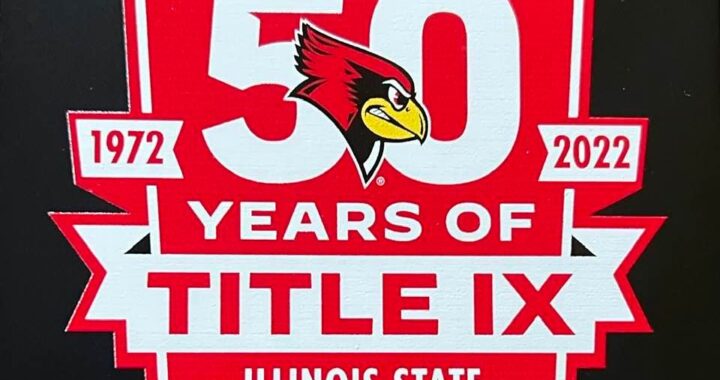
 Half a century ago, no one paid any attention when my friends and I played basketball. We got kicked off the court, but shoved our way back in the game, clearing the lane for Caitlin Clark, Angel Reese, Paige Bueckers, Juju Watkins and the contemporary stars of today.
Half a century ago, no one paid any attention when my friends and I played basketball. We got kicked off the court, but shoved our way back in the game, clearing the lane for Caitlin Clark, Angel Reese, Paige Bueckers, Juju Watkins and the contemporary stars of today.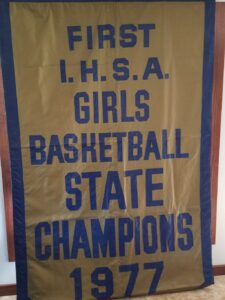 In the sixties, in my own second grade story I wrote about the lockers playing a basketball game against the waste baskets during recess. Back then, I imagined inanimate objects in school had a greater chance of competing in the game than girls. Yet, like my sports loving peers, we shot hoops anyway creating a path so new that no one envisioned its existence.
In the sixties, in my own second grade story I wrote about the lockers playing a basketball game against the waste baskets during recess. Back then, I imagined inanimate objects in school had a greater chance of competing in the game than girls. Yet, like my sports loving peers, we shot hoops anyway creating a path so new that no one envisioned its existence.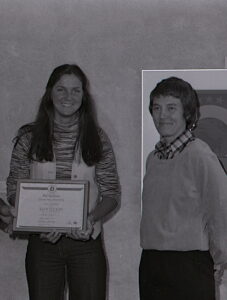
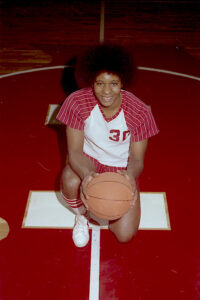
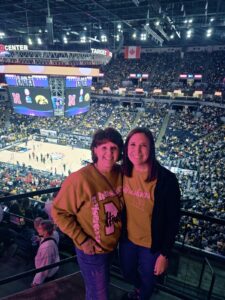


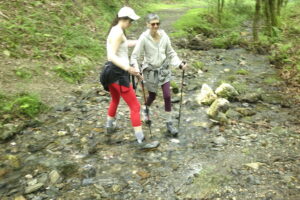
 My father and grandfather, good sportsmen, great coaches, dedicated their lives to helping others find their way and offered me stellar examples of resiliency. They remained athletes at heart, determined to stay as active as their bodies would allow until their final hours.
My father and grandfather, good sportsmen, great coaches, dedicated their lives to helping others find their way and offered me stellar examples of resiliency. They remained athletes at heart, determined to stay as active as their bodies would allow until their final hours.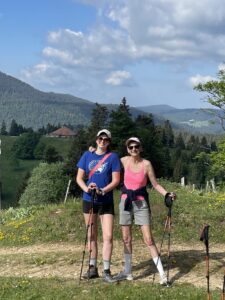

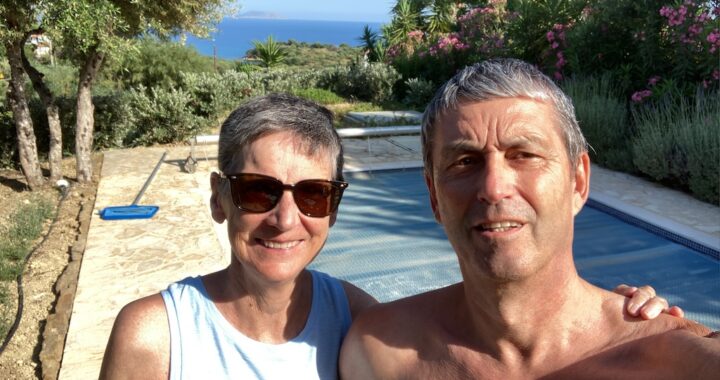
 Forty years ago on New Year’s Eve 1983, I said, “I do,” in a seventeenth century chapel in France, not far from the famous WWII Landing beaches. What are the odds of a small town girl from the cornfields of Illinois meeting a French boy raised by the sea in Normandy?
Forty years ago on New Year’s Eve 1983, I said, “I do,” in a seventeenth century chapel in France, not far from the famous WWII Landing beaches. What are the odds of a small town girl from the cornfields of Illinois meeting a French boy raised by the sea in Normandy?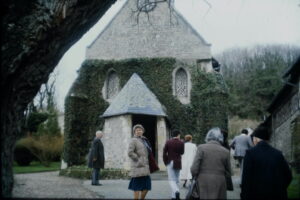



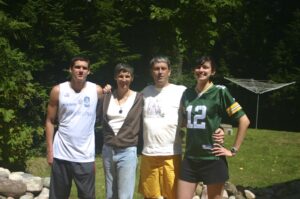 But our rewards were great; none greater than watching a bright, adventuresome daughter and a clever, witty son grow strong on basketball courts across Switzerland and go onto become doctors.
But our rewards were great; none greater than watching a bright, adventuresome daughter and a clever, witty son grow strong on basketball courts across Switzerland and go onto become doctors.


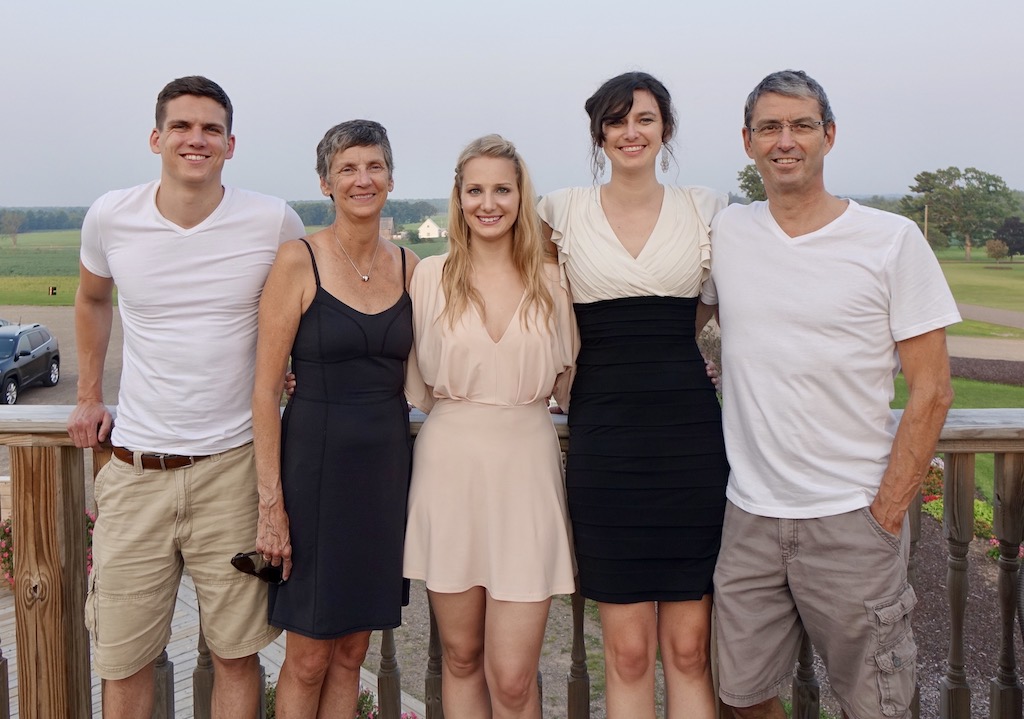

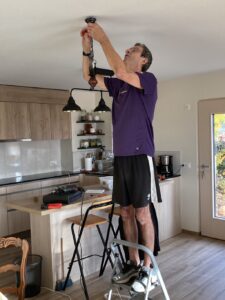 Between our old furniture falling apart after three years in storage and builders mistakes, each day in our new house brings a challenge. One morning, I opened the closet and the hanging rod broke, burying me under an avalanche of clothes. The next day the drawers collapsed, stripped from the support rail.
Between our old furniture falling apart after three years in storage and builders mistakes, each day in our new house brings a challenge. One morning, I opened the closet and the hanging rod broke, burying me under an avalanche of clothes. The next day the drawers collapsed, stripped from the support rail. A trip to a Swiss equivalent of Menards or Home Depot does my head in with its rows of wood, tile, kitchen, bathroom and plumbing fixtures and endless racks of tools, clamps, brackets, bolts and shelving.
A trip to a Swiss equivalent of Menards or Home Depot does my head in with its rows of wood, tile, kitchen, bathroom and plumbing fixtures and endless racks of tools, clamps, brackets, bolts and shelving.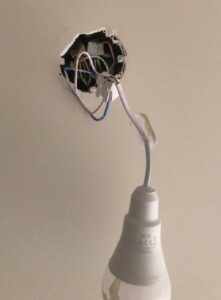 Then I wandered over to the luminaires department where hundred of different light fixtures blink. Imagine the spectacular light show? There were suspension, platform, ceiling, wall, desk, and table lights in three categories - incandescent, fluorescent, and high intensity discharge - all with various strengths of bulbs to choose from.
Then I wandered over to the luminaires department where hundred of different light fixtures blink. Imagine the spectacular light show? There were suspension, platform, ceiling, wall, desk, and table lights in three categories - incandescent, fluorescent, and high intensity discharge - all with various strengths of bulbs to choose from.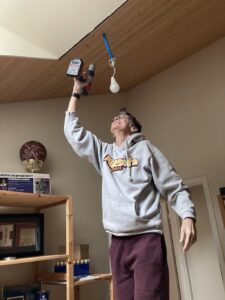 I can distinguish between a classic nail and a screw, but there are 25 different kinds of nails and 26 different types of screws in dozens of sizes. Even worse, Swiss measurements are in the metric system (ie. centimeters, millimeters), but my poor brain is stuck in inches, feet, and yards.
I can distinguish between a classic nail and a screw, but there are 25 different kinds of nails and 26 different types of screws in dozens of sizes. Even worse, Swiss measurements are in the metric system (ie. centimeters, millimeters), but my poor brain is stuck in inches, feet, and yards.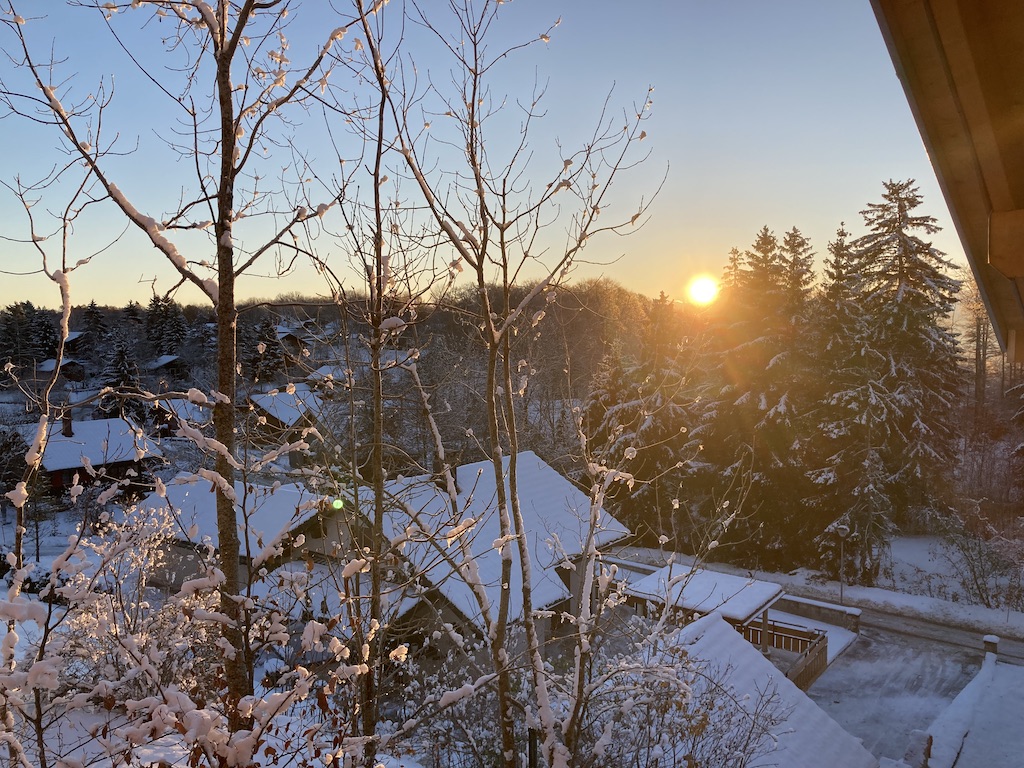
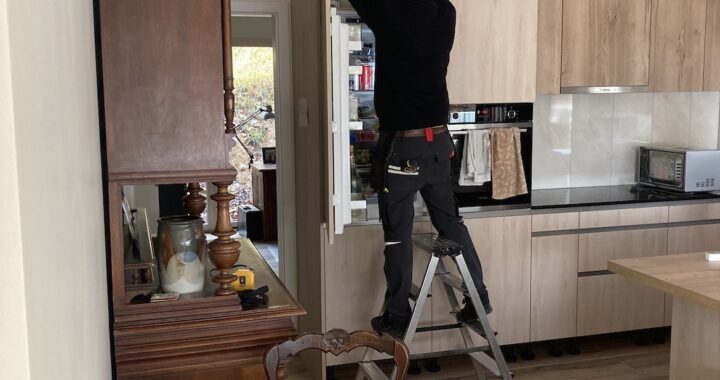
 We officially moved a month ago, but we keep having to relocate within our walls. We continue to rotate tables, chairs, dishes, books and clothes from place to place, so builders can replace broken fixtures and access faucets covered by dry wall.
We officially moved a month ago, but we keep having to relocate within our walls. We continue to rotate tables, chairs, dishes, books and clothes from place to place, so builders can replace broken fixtures and access faucets covered by dry wall. ly.
ly.
